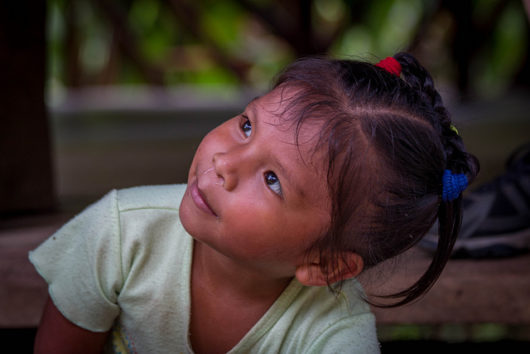Top 10 Facts About Girls’ Education in Costa Rica

From rainforest tours to deep-sea diving adventures, Costa Rica has made a name for itself in the fields of travel and tourism. The country is primarily known for these reasons and the conversations about other positive aspects in the country, such as the continuous improvement in education, are often left out.
Costa Rica is dedicated to its famed biodiversity but has also taken immense steps to improve its youth’s education, especially for girls. The article below details the top 10 facts about girls’ education in Costa Rica.
Top 10 Facts About Girls’ Education in Costa Rica
- Costa Rica is among the 25 countries that have closed the educational gender gap. The country has one of the highest education levels in Latin America since it began implementing gender equality legislation in the 1990s. This legislation made the government responsible for guaranteeing equal opportunities for men and women in education, which includes technical education.
- The country was quicker than most countries to ensure quality education to both boys and girls. In 2000, the Government of Costa Rica created the Gender Equity Office in the Ministry of Public Education to speed up gender equality and equity between men in women in the education system.
- Costa Rica spends more money on education than any other Latin American country. As of 2018, 4 percent of the country’s total Gross National Product (GNP) and about one-fourth of the national government budget is devoted to education. This number is comparable to many industrialized countries and more girls can enroll in primary school.
- To increase the chances of girls’ enrollment in secondary education, Costa Rica has created a plan to change family health. This governmental plan addresses the education barrier girls commonly face like pregnancy which is a growing issue as 13 percent of girls enrolled in Costa Rican schools are either pregnant or are already mothers.
- Girls have a higher enrollment rate in tertiary level education than boys. The percentage of girls in this level of education is at 59.8 percent, while the boys are at 46.6 percent. As a country that is often cornered in conversations about education, this higher education enrollment rate is impressive. In comparison, according to the World Bank’s data, the world’s average for girls enrolled in tertiary education is only 38.9 percent.
- With the improvement in girls’ education, more economic and job opportunities are being created for women. In 2000, 76.6 percent of Costa Rica’s female population were working for wage or salary. In 2016, this rate increased to 83.7 percent, while the employment rate for their male counterparts was at 75 percent.
- The girls’ primary school enrollment rate is substantive today. In the last 20 years, the rate has increased substantially. Today, nearly 97 percent of girls are enrolled in primary school and an average of 97.3 percent complete this stage of their education, passing boys that are at 95 percent.
- Upon graduating from primary school, 84.5 percent of girls go to secondary school, while 96.6 percent of boys do. This is due to the country’s high teen pregnancy rate. Organizations like Soy Niña (I’m a girl) are helping to increase girls’ enrollment in secondary school by holding learning sessions across the country that provide girls with tools to improve their self-esteem, critical thinking, leadership, problem-solving and conflict resolution skills.
- In 2017, for the first time ever, Costa Rica and other countries participated in the first International Day of Women and Girls in Science in the country. The San Jose UNESCO office, alongside the National Institute of Women, spent the day celebrating efforts to increase girls’ participation in science education. Today, women make up only 28 percent of scientific researchers.
- According to UNESCO, the Latin American country has set several other goals to reach by 2030. One of the goals is the continuation of decreasing the number of girls who dropped out of school. As of 2016, only 6,000 girls had dropped out, while six years prior almost 10,000 had.
Costa Rica’s commitment to bettering girls’ education is not only inspiring, but their methods could serve as a guide to other countries. As exemplified in the top 10 facts about girls’ education in Costa Rica above, providing girls with a quality education does not just benefit the students, but the country as a whole, as new economic opportunities are created and a stronger workforce is built.
If Costa Rica continues to make strides like the ones described, it is only a matter of time before they become known worldwide for much more than their coffee and scenic travel destinations.
– Haley Newlin
Photo: Flickr
